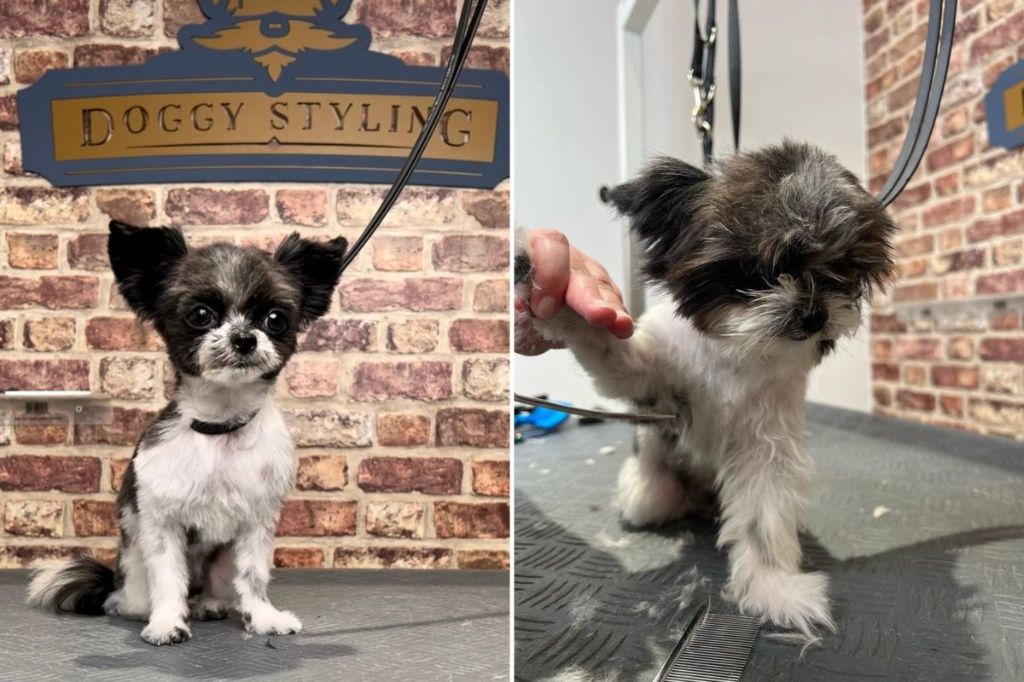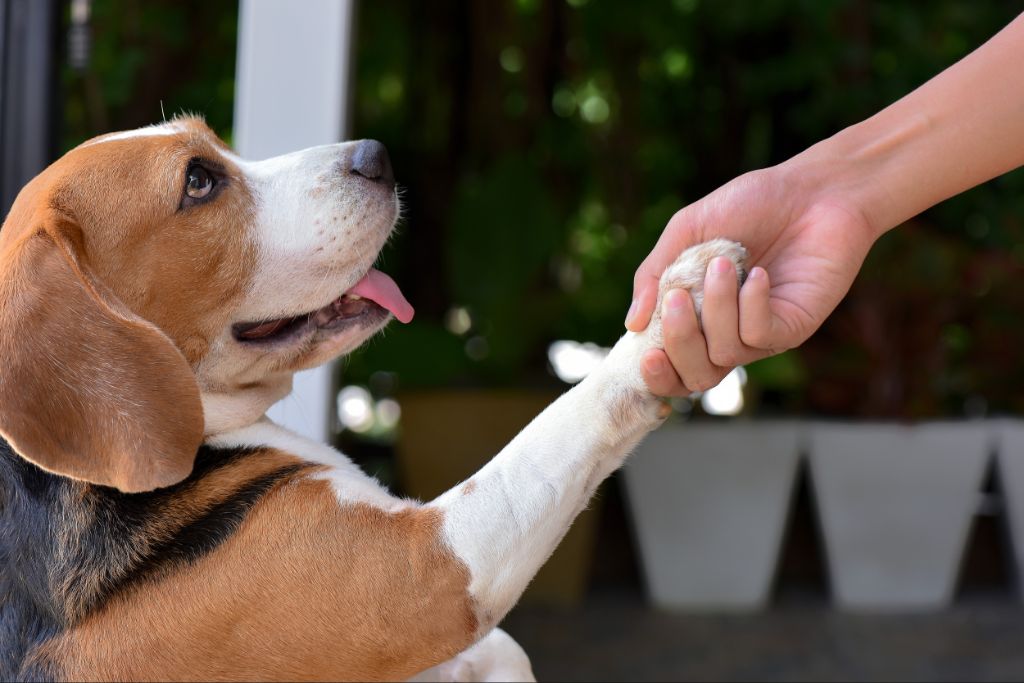Introducing the Topic
Owning a dog while working a full-time job can be challenging, but it’s certainly possible with the right breed and proper planning. According to the American Veterinary Medical Association, over 76 million dogs are owned as pets in the United States. Many of these dogs belong to full-time workers who make sure their canine companions get the care and attention they need.
The keys are choosing a breed suited for an owner who works full-time, providing enrichment activities during the day, scheduling regular exercise and potty breaks, and giving ample quality time together when at home. With preparation and commitment, full-time workers can develop strong bonds with their dogs.
Consider Energy Level
When choosing a dog breed that’s suitable for full time workers, it’s important to consider the dog’s typical energy levels and exercise needs. Some dog breeds tend to have naturally high energy and require a lot of activity, exercise and mental stimulation. Breeds like Border Collies, Jack Russell Terriers, and Australian Shepherds fall into the high energy category [1]. These dogs demand daily vigorous exercise like running, hiking, or intense play sessions. Without an outlet for their energy, they’re prone to destructive behaviors out of boredom.
On the other end of the spectrum, low energy dog breeds are more easygoing and relaxed. Examples include Greyhounds, Saint Bernards, Chow Chows, and Basset Hounds [2]. They’re content with shorter, less intense exercise like a couple of daily walks. These more laidback dogs are less likely to develop problem behaviors if left alone during a long workday.
For busy owners who work full time, a medium energy dog that falls somewhere in between is often a good fit. Moderate energy breeds like Beagles, Bulldogs, Pugs can adapt to an owner’s lifestyle with proper exercise, while not being quite as demanding as high energy dogs.
Outdoor Space

Having access to an outdoor space like a yard or patio where your dog can exercise and relieve themselves is an important consideration for full time workers. Dogs left alone all day cooped up indoors often develop behavioral issues from lack of stimulation and exercise (Washington Post).
If you have a yard, make sure it is securely fenced so your dog can’t escape while you are gone. Consider installing a dog door so they can freely go in and out (Pinterest). Provide toys to keep them occupied and set up a shaded spot for them to relax.
For apartment dwellers without a yard, a patio or balcony can work as long as you provide plenty of walks, exercise, and stimulation. Set up an artificial grass pad for easy potty breaks. Provide interactive toys to keep your dog engaged when alone (Pinterest).
The bottom line – some outdoor access is ideal for dogs of full time workers. Make the most of the outdoor space available to keep your dog happy.
Barking Tendencies
Some breeds are more prone to frequent barking than others. According to Your Neighbor’s Nightmare! 10 Breeds That Bark the Most, the Miniature Schnauzer is one of the noisiest and most vocal breeds. Their barking tendencies mean they are more likely to elicit noise complaints from neighbors in close quarters. Other noisy breeds cited as frequent barkers include the Yorkshire Terrier, Pomeranian, and Corgi.
To keep barking to a minimum, it’s important to train your dog not to bark excessively, provide enough exercise and mental stimulation, and consider bark collars as a last resort if the barking is truly excessive. With time and training, dogs can learn to curb unnecessary vocalizations.
Separation Anxiety
One of the biggest considerations for full-time workers is a dog’s tendency towards separation anxiety or stress when left alone for extended periods. According to the American Kennel Club, breeds like Labrador Retrievers, German Shepherds, and Border Collies are more prone to separation anxiety and stress when their owners are away at work. On the other hand, breeds like Greyhounds, French Bulldogs, and Basset Hounds tend to be more independent and less distressed when left alone during the workday.
Signs of separation anxiety include destructive behaviors like chewing and barking when the owner leaves, as well as physical symptoms like drooling and trembling. Dogs with higher separation anxiety require extra training and conditioning to be comfortable home alone for 8+ hours. Independent breeds are naturally more tolerant of solitary time while their owners work.
When choosing a breed as a full-time worker, opting for those predisposed to independence like Greyhounds and Basset Hounds can minimize separation issues. However, any breed can adapt with proper training and preparation. Using tactics like providing interactive toys, maintaining a routine, and avoiding emotional farewells and greetings can help ease separation stress regardless of breed tendencies.
Grooming Needs
Most dogs require professional grooming every 4-6 weeks, though some breeds may only need professional grooming every 6-8 weeks. According to the American Kennel Club, you should get your dog groomed once a month for the majority of breeds, though the frequency might vary depending on your dog’s coat type, breed, age, and overall health.

Professional grooming can cost $30-$80 per visit on average. Certain breeds with high maintenance coats like Poodles may cost over $100 per grooming session. Long-haired breeds like Yorkshire Terriers need more frequent grooming to prevent matting, while short-haired breeds like Labradors may not need as much professional grooming.
When budgeting for a dog, you’ll need to factor in these recurring professional grooming costs. For full-time workers who are away for long hours, regular professional grooming is essential to keep the dog clean, healthy, and matt-free.
Sources:
Trainability
When looking for a dog that’s easy to train, some breeds naturally stand out. The Doberman Pinscher is renowned for being one of the easiest dogs to train, which is why they’re frequently used as police and military working dogs (1). Their intelligence, athleticism, and eagerness to please makes Dobermans highly responsive to obedience training.
Other typically obedient breeds are the German Shepherd, Golden Retriever, Poodle, and Border Collie (2). Their energetic and attentive natures allow them to focus during training sessions and quickly pick up on new commands. These intelligent breeds aim to please their owners and will happily engage in repetitive training.
While individual personalities vary, choosing an inherently obedient breed stacks the odds in your favor for an easy-to-train pet. Focusing training on positive reinforcement and starting early while your dog is a puppy will further ensure a cooperative companion.
(1) https://www.rd.com/list/puppies-easiest-hardest-train/

(2) https://www.purina.co.uk/find-a-pet/articles/dog-types/breed-guides/easiest-dogs-to-train
Exercise Needs
An adult dog should get 30-60 minutes of exercise daily, according to the experts at the American Kennel Club (AKC).
When considering exercise needs, be sure to factor in regular daily walks. All dogs need daily walks to satisfy their instinct to migrate. A simple walk around the block once or twice a day should be sufficient for lower energy breeds. Some higher energy breeds like Labs or Shepherds may need longer or more frequent walks.
In addition to walks, most dogs need active play time. Playing fetch, tug of war, or chasing balls engages them mentally and physically. The AKC recommends high energy breeds get 30-60 minutes of active play per day. Lower energy dogs only need 5-10 minutes of play mixed into exercise.
One tip for full-time workers is to break exercise into multiple shorter sessions. For example, a walk in the morning, playtime at lunch, and another short walk in the evening. This prevents your dog from being inactive all day while you are gone.
Age
There are some key differences between raising a puppy versus an adult dog that are important to consider if you work full time:
Puppies require much more time and attention, as they need to be let out frequently for potty training, require socialization and training from a young age, and can get into mischief easily if left unattended. Puppies generally need near constant supervision the first few months before they can be left for longer periods.
Adult dogs are calmer and can be left alone for longer periods more easily once acclimated. They require less intensive potty training and socialization. However, adopting an adult dog still requires dedicating ample time to bonding, training, and meeting exercise needs.
While puppies take more effort upfront, some benefits are they can be trained from a blank slate. Adult rescues may come with challenges like behavioral issues that require training. But adopting an adult can skip the puppy stage altogether.
Overall, adult dogs require less supervision and time than puppies, but dogs of any age need adequate care and attention. If getting a puppy, be prepared to provide constant care initially. For those with full time jobs, an adult dog may be easier to manage.
(Source: https://petcube.com/blog/raising-a-puppy/)
Example Breeds
Certain breeds tend to do better than others for full time workers based on their energy levels, independence, and other traits. Some examples include:
Maltese: This small, affectionate breed thrives on being with humans and does not require a lot of exercise, making them a good option for those away at work much of the day (Source). Their small size also means they do not require a large home or yard.

Basset Hound: Known for being mellow and low energy, Basset Hounds make good companions for those away much of the day. They are also independent and do not commonly suffer from separation anxiety (Source).
Shiba Inu: As an independent, intelligent breed, Shiba Inus can thrive with owners who work full time. Their moderate exercise needs also make them adaptable (Source).
In general, breeds that are lower energy, more independent, and do not require extensive daily exercise or grooming tend to adjust better for full time workers’ lifestyles.